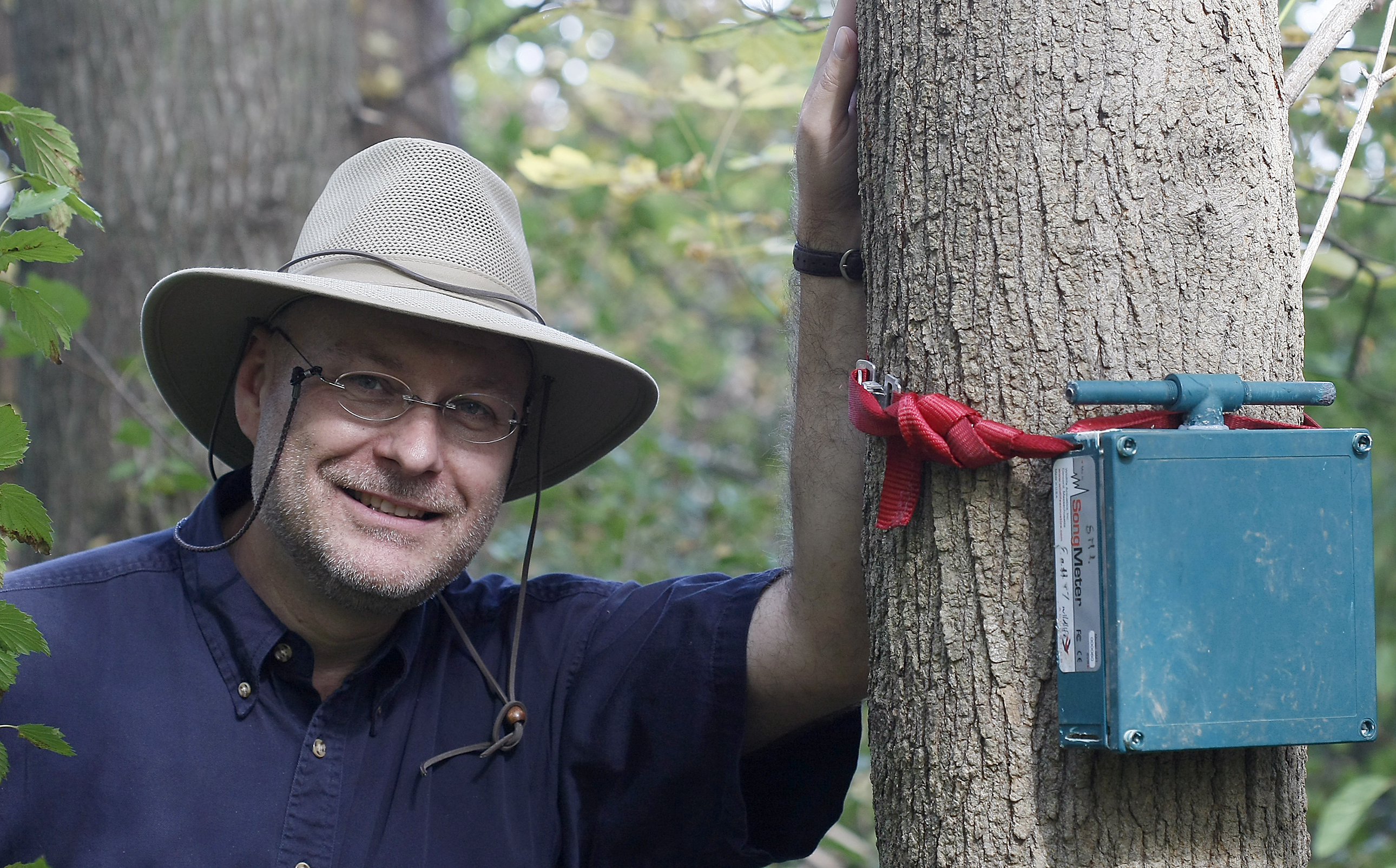Purdue researcher leads effort to capture natural sounds, coordinate global network
WEST LAFAYETTE, Ind. – A Purdue University researcher will lead a global natural soundscape network to coordinate research that could help detect early changes in climate and weather patterns, the presence of pollution and other environmental impacts.
Bryan Pijanowski, a forestry and natural resources professor, is bringing together a team of researchers in the areas of science, music and psychology to launch the Global Sustainable Soundscape Network, which is funded through an initial $500,000 grant from the National Science Foundation's Coupled Natural-Human Systems Program.
"Human domination of natural habitats has resulted in the loss of biodiversity, robbing areas of their natural sounds," said Pijanowski, a faculty affiliate with Discovery Park's Center for the Environment. "The loss of species has been so significant that some are concluding that we are experiencing the sixth extinction event."
Pijanowski will discuss the Global Sustainable Soundscape Network project on Friday (Nov. 4) during the Purdue College of Agriculture Dean's Advisory Council fall meeting.
Researchers hope to gain a better understanding of how animals interact with each other - even across species, Pijanowski said. Some silent newts, for example, follow frog sounds to find the best breeding ponds. Another goal of the network is to capture sounds that are being lost because of global habitat modification.
"Interactions among species and their competition for acoustic space impact mate selection and predator-prey interactions. As a result, there's the potential to affect population and community dynamics," Pijanowski said.
The network will foster collaboration among different disciplines about soundscapes and how they control dynamics and the way humans experience sounds in the environment, he said. That will be accomplished through listening and conservation workshops, lectures, technical training, the sharing of sensor technology and custom software tools, and social networking.
A new Global Sustainable Soundscape Network website will launch on Dec. 1 to provide researchers, educators, policymakers and the general public information about project efforts and updates.
Researchers will coordinate four or five soundscape monitoring sites to collect acoustic data from the Kenai Wildlife Refuge on the Alaskan Kenai Peninsula; the Midwest Temperate Ecosystems centering in the Chicago Wilderness planning area, the Sonoran Desert Region in southern California through northern New Mexico and south to the Baja Peninsula of Mexico; the Borneo Equatorial Rainforest in Malaysia; and Mediterranean Landscapes in Tuscany, Italy.
An international competition is planned to select proposals from natural sound composers to create compositions recorded by ecologists, which the network will commission for a 10-minute recording. The winner will receive a $5,000 prize and the opportunity to deliver a plenary lecture at the annual World Forum for Acoustic Ecology conference where the piece will premiere.
Pijanowski, who already has a library of 500,000 natural sound recordings taken from sites in Tippecanoe County in Indiana and Costa Rica, is making software tools and sound file examples available to help those interested in becoming involved in the research. To hear some of his recorded natural sounds, go to https://1159sequoia05.fnr.purdue.edu/bioscience/
He's confident this project will help plant the seed for creating the scientific field of soundscape ecology, which will use sound as a way to understand the characteristics of a habitat and to emphasize the ecological importance of natural sounds.
"Our goal is to develop standards and to support research activities to bridge related fields," Pijanowski said.
Network researchers also are developing a vocabulary for the field by establishing terminology and borrowing terms from related disciplines such as "biophony" (the sounds created by organisms) and "geophony" (the sounds of non-biological entities such as wind and thunder).
Pijanowski and Catherine Guastavino, an associate professor of information studies at McGill University in Montréal, are the project's co-principal investigators.
In 2006 the Center for the Environment funded a seed project to support ecological acoustics research at Purdue and to develop a prototype acoustic observation system. This was used to demonstrate the capacity for obtaining acoustic measurements to quantify and interpret biological activity across a landscape.
"It's exciting that Discovery Park and the Center for the Environment have paved the way for professor Pijanowski to develop a large and funded concept on global soundscape," said Pankaj Sharma, managing director of the Center for the Environment and Energy Center.
Writer: Phillip Fiorini, 765-496-3133, pfiorini@purdue.edu
Sources: Bryan Pijanowski, 765-496-2215, bpijanow@purdue.edu
Catherine Guastavino, 514-398-1709, catherine.guastavino@mcgill.ca
Pankaj Sharma, 765-496-7452, sharma@purdue.edu
Note to Journalists: For the abstract of the National Science Foundation proposal about the Global Sustainable Soundscape Network, go to: https://www.nsf.gov/awardsearch/showAward.do?AwardNumber=1114945

